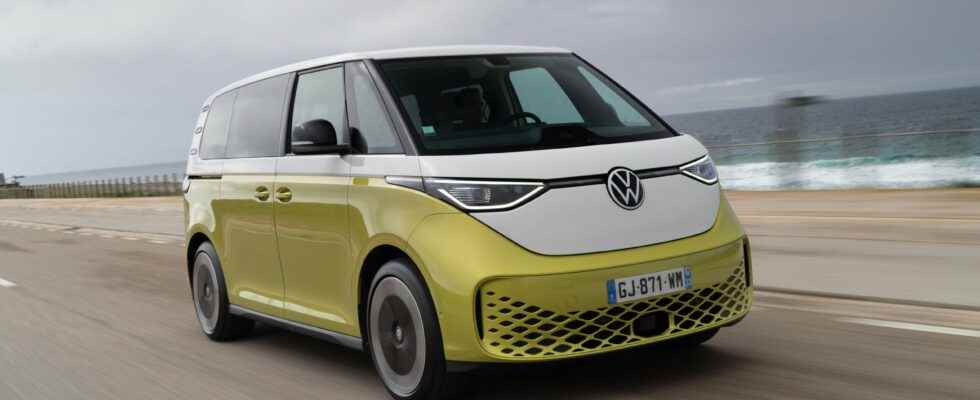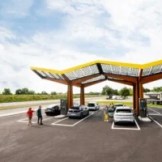Volkswagen’s latest electric van, the ID. Buzz, come and rub shoulders with our long-distance exercise. Between costs, charging time and journey time, how is the German electric combi doing?
First true 100% electric van, the Volkswagen ID. Buzz has a lot to offer, both on a daily basis thanks to its space on board and on long journeys where it can easily move large families. We are therefore going to compare the promises of the electric combi to our reference trips.
We resume the usual rules of this exercise, namely: the start will be at 100% battery, the finish at 20% and the vehicle will have to drive at the limit speeds. We will first come back to the characteristics of the vehicle, in particular with regard to autonomy and charging power, before simulating our two usual long journeys.
In this way, using the summary tables available later in this article, you will see which vehicles allow you to arrive at your destination not only as quickly as possible, but also at the lowest cost. Let’s take a look together at how long journeys in the Volkswagen ID take place. buzz.
The characteristics of the Volkswagen ID. Buzz
The Volkswagen ID. Buzz has a 77 kWh battery, which gives it a WLTP range of 419 kilometers. Of course, the exercise of the day prevents him from reaching such a range, particularly with the ID. buzz.
Indeed, at high speed – which is the case in our daily exercises – aerodynamics matter a lot. Problem: the shape of the German electric van clearly does not play in its favor in this area in particular.
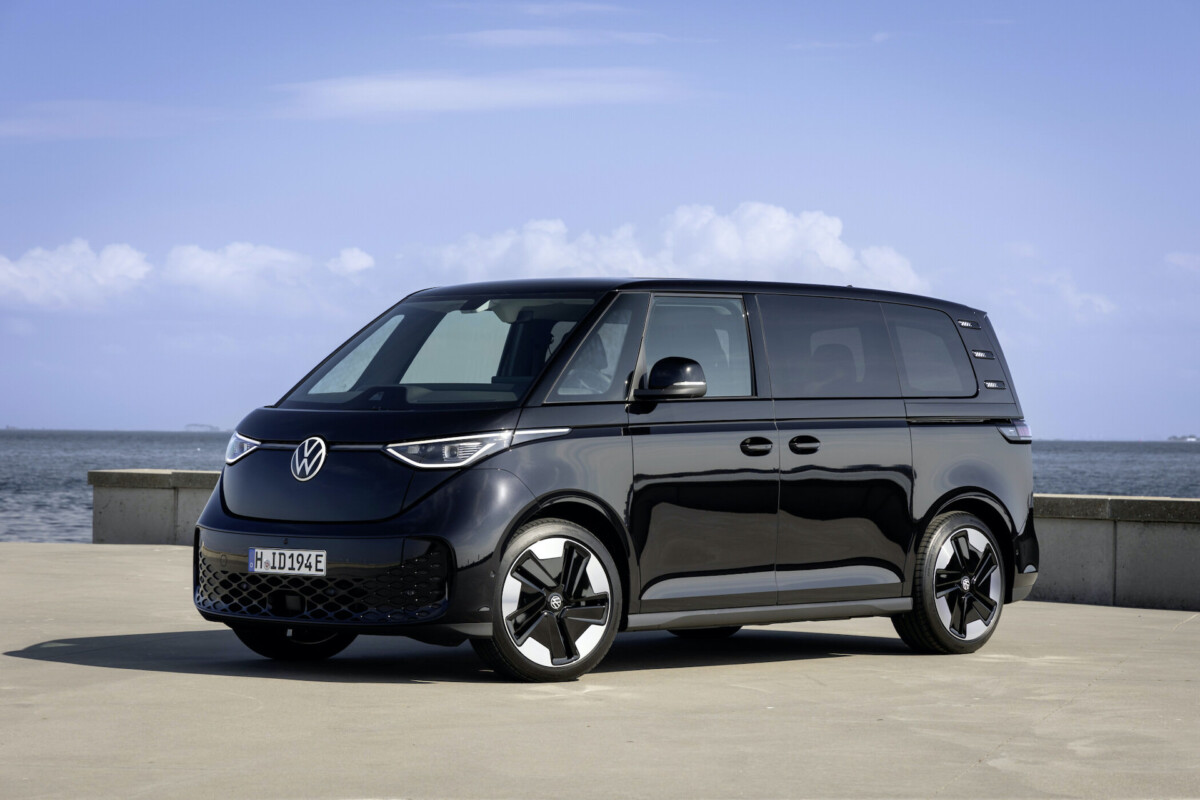
It will be necessary to rely on its fast charging power (170 kW maximum) during the various routes, where the manufacturer announces 30 minutes to go from 5 to 80% of the battery in ideal conditions. We will use the various existing networks to arrive safely, in particular Ionity, or Tesla Superchargers, and the Kallista Energy charging station if necessary.
As usual, A Better Route Planner will be used to plan the routes, with the default consumption reference for the car model considered today.
Route planning
To respect the same rules for all, we start trips at 100% battery, considering that you have to pay for this filling at the average price per kWh in France, currently at 0.17 euros. The 77 kWh of the Volkswagen ID. Buzz represent then 13 euros. We will take this cost into account when taking stock of each major journey.
The first big ride will simulate summer holidays from Orléans to Arcachon (530 kilometers). The winter route will start in Caen and end in Chamonix-Mont-Blanc (850 kilometers).
For the summer route, the parameters indicated in A Better Route Planner are as follows: 25 degrees Celsius outside temperature, no wind, arrival at a charging station with 10% battery remaining, and arrival at destination at 20% . For the winter trip, it’s essentially the same, apart from the weather, where we chose a temperature of 0 degrees Celsius.
The balance sheet of the different routes
45 minutes of charging to travel 530 kilometers in summer
Our summer reference route is rich in fast charging stations, which is therefore no problem for the Volkswagen ID. buzz. However, it is necessary to stop several times to arrive at the destination with 20% battery.
Three stops are planned by A Better Route Planner, for a total duration of 48 minutes. The first stop is very short (9 minutes), but the second exceeds 20 minutes, when the last is 17 minutes.
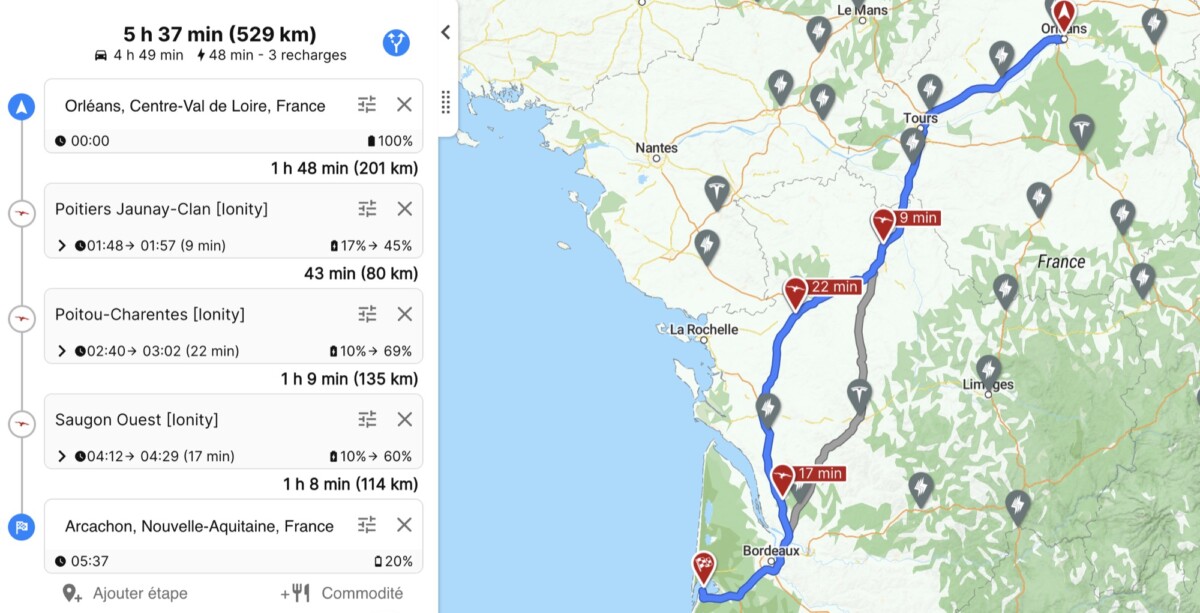
The three charges at Ionity cost around 73 euros. By adding the price of home charging, this journey of 530 kilometers costs around 86 euros.
The estimated consumption is 292 Wh/km, which gives a range of approximately 260 kilometers, far from the 419 kilometers of the WLTP cycle.
Consumption that soars in winter
Winter is much more difficult for electric vehicles, and our trip with an outside temperature of 0 degrees, combined with the positive elevation of the trip, means that consumption is necessarily higher than in summer.
Therefore consumption of the Volkswagen ID. Buzz reaches 335 Wh/km on this 850 kilometer trip, 15% more than on the summer route. With such consumption, autonomy bottoms out at 230 kilometers with a full battery.
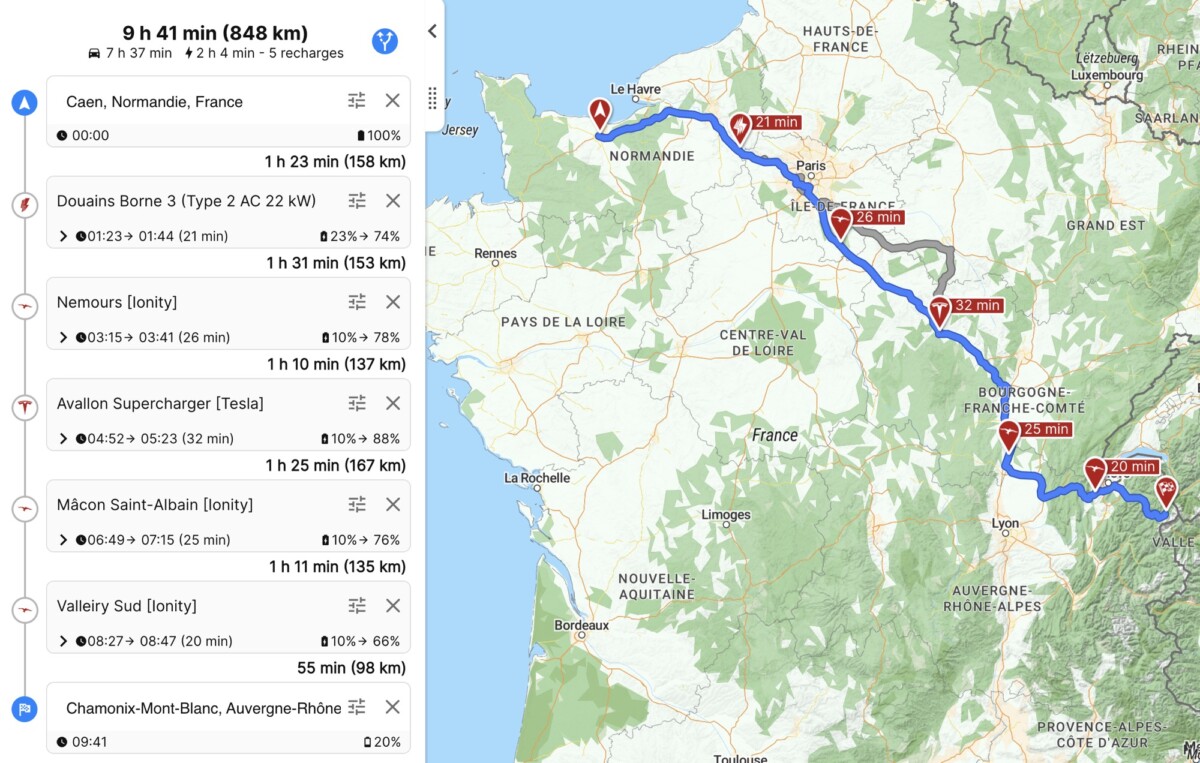
Five recharges are offered on this route, totaling just over two hours of recharge. Fortunately, no load exceeds the gross half hour (32 minutes for the longest), showing that trips in Volkswagen ID. Buzz remain indeed feasible in good conditions.
Be careful, however, of the cost, because with such consumption, the expenses related to fast charging reach 169 euros. Adding the price of home charging, we arrive at a total of 182 euros for this winter trip.
Consumption, cost of recharging and autonomy
We summarize the costs and charging times (including home charging at 13 euros) in the table below. As we go through our examples, you will be able to see where the vehicle you are interested in is positioned in relation to the others on a similar journey.
| Vehicle | Summer ride cost | Summer ride charging time | Total summer journey time |
|---|---|---|---|
| Tesla Model 3 Drive | 36 – 49 € | 31 mins | 5 h 09 min |
| Tesla Model 3 Long Autonomy | 31 – 45 € | 13 – 25 mins | 4 hrs 56 mins |
| Kia EV6 58kWh | 52 – 60 € | 38 – 43 mins | 5 hrs 30 mins |
| BMW i4 | 48 – 58 € | 22 – 37 mins | 5 hrs 11 mins |
| Hyundai Ioniq 5 | 72 € | 36 mins | 5 hrs 16 mins |
| Mercedes-Benz EQS | 44 € | 14 mins | 4 hrs 48 mins |
| Tesla Model Y Propulsion | 46 € | 34 mins | 5 hrs 30 mins |
| MG MG4 64 kWh | 66 € | 49 mins | 5h 39min |
| Renault Megane e-tech EV60 | 67 € | 56 mins | 5h 40 mins |
| Kia EV6 77kWh | 56 € | 26 mins | 5 h 07 min |
| Hyundai Kona 64kWh | 61 € | 58 mins | 5 hrs 47 mins |
| Peugeot e-208 | 73 € | 1 hr 13 mins | 6 h 09 min |
| Tesla Model S Poster | 46 € | 14 mins | 4 hrs 52 mins |
| Tesla Model S | 34 € | 9 mins | 4 hrs 47 mins |
| Skoda Enyaq iV 80 | 51 € | 27 mins | 5 h 01 min |
| Skoda Enyaq iV Coupe 60 | 58 € | 42 mins | 5 hrs 19 mins |
| Volkswagen ID. Buzz | 82 € | 48 mins | 5 hrs 37 mins |
| Vehicle | Winter trip cost | Winter ride charging time | Total winter journey time |
|---|---|---|---|
| Tesla Model 3 Drive | 102 € | 1 hr 42 mins | 9:16 a.m. |
| Tesla Model 3 Long Autonomy | 101.3 € | 1 hr 02 mins | 8:27 a.m. |
| Kia EV6 58kWh | 120 € | 1hr 54mins | 9 h 59 min |
| BMW i4 | 147 € | 1 hr 32 mins | 9 h 08 min |
| Hyundai Ioniq 5 | 145 € | 1 hr 29 mins | 9:14 a.m. |
| Mercedes-Benz EQS | 115 € | 50 mins | 8 h 03 min |
| Tesla Model Y Propulsion | 120 € | 1 hr 46 mins | 9 h 42 min |
| MG MG4 | 109 – 141 € | 2 hrs 23 mins | 10 h 02 min |
| Renault Megane e-tech EV60 | 104 – 139 € | 2 hrs 12 mins | 9 h 49 min |
| Kia EV6 77kWh | 143 € | 1 hr 14 mins | 8 hrs 54 mins |
| Hyundai Kona 64kWh | 98 – 132 € | 2 hrs 24 mins | 10 h 01 min |
| Peugeot e-208 | 168 € | 2 hrs 49 mins | 10 h 59 min |
| Tesla Model S Poster | 104 € | 42 mins | 8 hrs 5 mins |
| Tesla Model S | 88 € | 33 mins | 7 hrs 55 mins |
| Skoda Enyaq iV 80 | 113 € | 1 hr 18 mins | 8:33 a.m. |
| Skoda Enyaq iV Coupe 60 | 118 € | 1 hr 46 mins | 9 h 04 min |
| Volkswagen ID. Buzz | 182 € | 2 hrs 04 mins | 9 h 41 min |
The Volkswagen ID. Buzz is expensive on long journeys
Spread the word, the Volkswagen ID. Buzz is very expensive on long journeys, especially when we compare it to other vehicles that have already gone through this exercise. But you have to take into consideration the rather new segment in which is the electric combi of the German group.
Indeed, its consumption exceeding 300 Wh / km is very high (around 50% higher than a Tesla Model Y for example), but that was expected. With 2.5 tons and a not very aerodynamic shape, highway trips do not highlight this model.
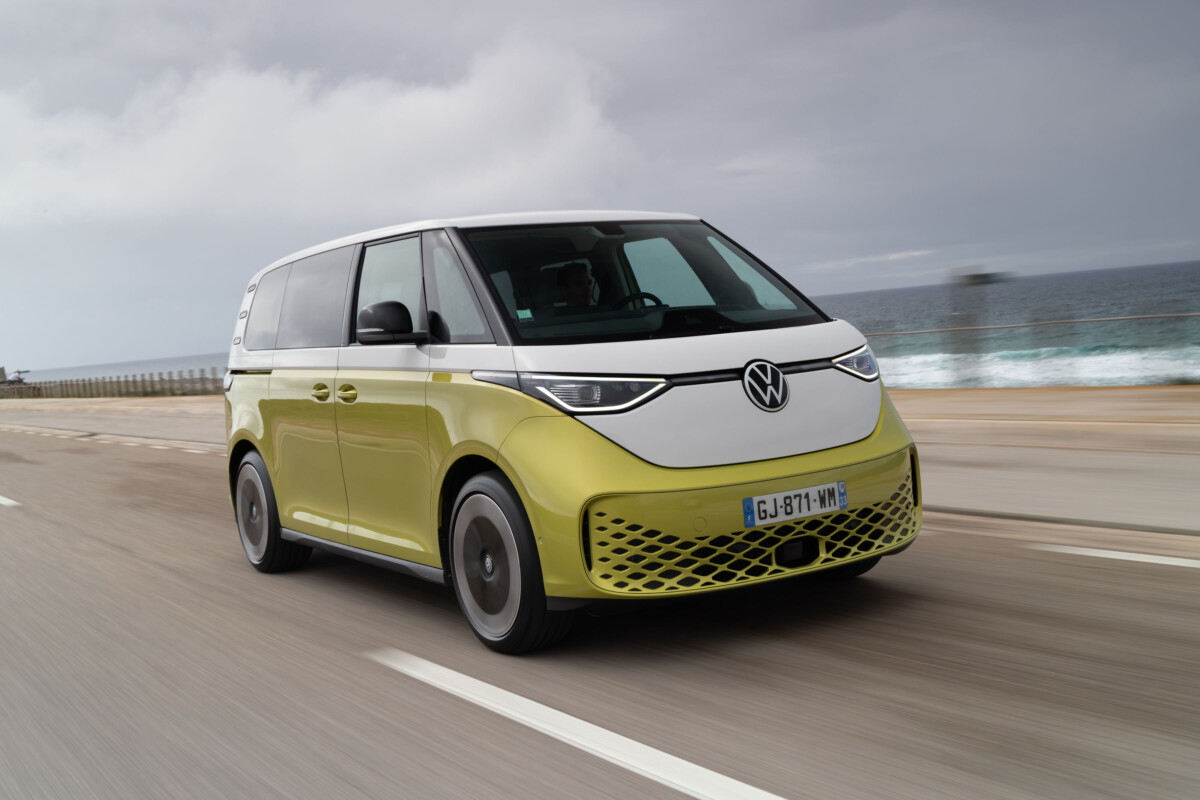
The cost per 100 kilometers is 16 euros in summer and rises to more than 21 euros in winter. Of course, this is a record for the exercise, but it is not much higher than some “bad students” that we have already encountered in the same exercise. The Peugeot e-208 for example is not only 8% less expensive on the winter journey, when we are in the presence of a city car facing an electric van.
Anyway, it will be interesting to compare this Volkswagen ID. Buzz to other electric vans when this segment gets bigger than today, to check out which ones are the most efficient. For the moment, we notice all the same that despite the high consumption, many electric cars require more charging time for different journeys.
In winter in particular, in addition to the Peugeot e-208, we find the Hyundai Kona 64 kWh, the Renault Mégane e-tech EV60 or the MG4 which exceed the two hours of recharging required. Which again shows that the sustained charging power remains very important during long trips.
To follow us, we invite you to download our Android and iOS application. You can read our articles, files, and watch our latest YouTube videos.
